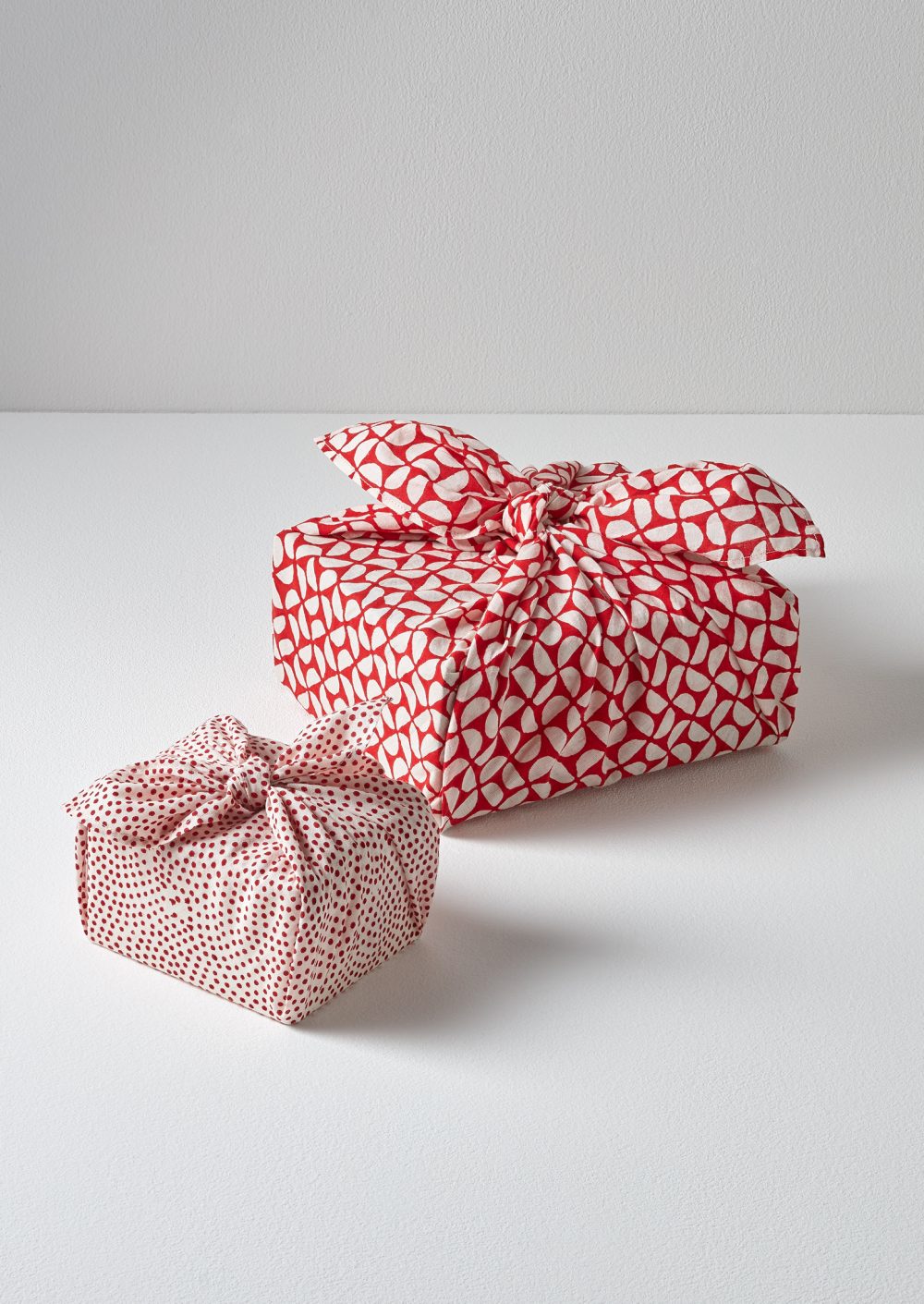Introducing furoshiki: The eco-friendly way to wrap Christmas gifts

Photos: Toast
My grandma felt the waste of ‘all this pretty paper’ and when unwrapping Christmas and birthday presents she would smooth it out and fold it up to reuse, while the rest of the family laughed. But now we’re all reusing, reducing and recycling. The UK will use around 108 million rolls of wrapping paper this Christmas, but there is an elegant, and eco-friendly, alternative…
Wrap Japanese-style
I lived and worked in Japan for a couple of years, where I was baffled on a daily basis, by all kinds of things, partly down to being functionally illiterate in the world around me, but partly because Japan does many things its own way. I would see people carrying elegant fabric-wrapped bundles and wonder what they were: posh washing, or a screwed-up shirt? One of my colleagues enlightened me about ‘furoshiki’: a fabric wrap used for presents, or other things like a bento box lunch, when the cloth can be used as a place mat, and perhaps double up as a napkin. The practice dates back to the 700s and I wasn’t too far off with my first guess: originally it was a bundle of clothes for a public bath visit.
It’s recently become popular with people wanting to produce less waste. And Christmas wrapping is woefully wasteful. And if it has a metallic finish, it can’t even be recycled. In the UK, more than 83 square kilometres of Christmas wrapping paper ends up in the bin. And even if that’s the recycling bin, it’s still cleaner and greener to use something that can be reused.
By the way, it’s pronounced with three syllables – ‘foo-rosh-kee’ – not four.

What can you use to wrap?
In Japan, special furoshiki cloths in various sizes are sold, but any piece of fabric that’s big enough will do. The obvious, and most authentic, option is a silky scarf, and if you don’t have any to spare, try a charity shop. You could also use a knitted scarf, a handkerchief, a T-shirt, a teatowel, or even a dishcloth. Or how about a pillowcase or one of those cloth bags supplied with smart bags or shoes? For something more useful, use a ‘not a plastic bag’ shopping bag. Whatever you choose, it’s two gifts in one.
There are many forms of furoshiki but here’s the simplest: spread the cloth out, place the present in the middle, centred diagonally, then fold up two opposite corners on top of the present so that they lie as flat as possible. Then fold up the other two corners and tie in a knot. One big advantage of wrapping like this is that the fabric, being soft, drapes over the contours of even the most awkwardly shaped present, much better than creased folds of paper.
If you’re striving for authenticity, the Japanese Ministry of the Environment has produced this handy chart of the best ways to wrap all sorts of shapes.

Another advantage of furoshiki is that you don’t need sticky tape. If you find there’s not enough fabric to tie a knot, you could secure the package with string, fancy shoelaces or a piece of ribbon…
If you can’t find any suitable pieces of fabric, Etsy and Not On The High Street both have lots of eco-friendly wrapping options; Toast has furoshiki wrapping cloths at £15 each; Edinburgh-based Furoshiki Giftwrap sells cloths, and has useful instructions on different knots to tie; Wragwrap has stretchy fabric tubes in which you can wrap any shape, from £3.25, and Lush has Knot Wrap, from £4.
Happy Japanese wrapping!
What a fantastic idea!
Thank you so much for this and i’m going to start right away. I have recently bought some gorgeous patterned and coloured neckchiefs that will double up as napkins, hankerchiefs and of course face masks and i was going to wrap them with the other gifts in the usual Christmas paper. Now I am going to use these as wrapping.
I’m thrilled about the eco-friendly side of this and also how happy my friends will be with the new look to their presents!